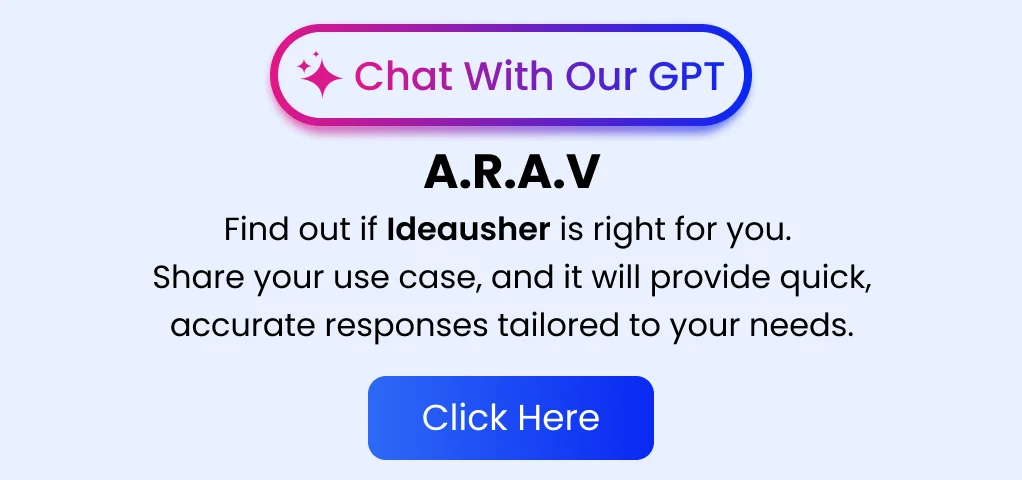As AI systems become more autonomous and influential in decision-making, enterprises face growing pressure to ensure these decisions are transparent, fair, and accountable. Complex AI models often operate as black boxes, leaving users unsure why a particular outcome was reached. Explainable AI offers a solution, shedding light on how agentic AI systems arrive at decisions and making their processes auditable and trustworthy.
By designing agentic AI systems with explainability at their core, organizations can combine intelligent automation with interpretability. Techniques like model-agnostic explanations, decision tracing, and interactive visualizations help businesses track AI reasoning, validate outcomes, and ensure compliance with regulatory requirements, all without sacrificing performance or scalability.
This blog is about how to create explainable agentic AI systems that provide auditable decisions. From architecture and design considerations to practical implementation strategies, you’ll gain insights into building AI that is not only intelligent but also transparent, reliable, and accountable.

Understanding Explainable Agentic AI for Auditable Decisions
Explainable Agentic AI combines the power of autonomous intelligence with transparent, auditable decision-making, enabling enterprises to deploy AI confidently across critical workflows. Below, we break down the concepts that form this approach.
A. Agentic AI
Agentic AI means systems that can reason, plan, and act on their own to achieve certain goals. These systems do more than just react to inputs. They:
- Make context-aware decisions based on dynamic data.
- Adapt to changing conditions and evolving tasks.
- Collaborate with other agents to achieve complex objectives efficiently.
B. Explainable AI (XAI)
Explainable AI focuses on making AI decision-making processes transparent and interpretable. Its primary benefits include:
- Helping enterprises understand why a model reached a particular conclusion.
- Building trust and accountability in AI-driven operations.
- Enabling regulatory compliance through clear reasoning and documentation.
C. Explainable Agentic AI Systems
When combined, Explainable Agentic AI Systems integrate autonomous reasoning with explainability, creating a fully auditable and trustworthy AI ecosystem. Key characteristics include:
- Traceable Decisions: Every agent action is logged with its reasoning chain.
- Justifiable Actions: Systems provide human-understandable explanations for decisions.
- Compliance-Ready: Decision trails meet regulatory and audit requirements.
- Collaborative Autonomy: Multiple agents coordinate transparently, sharing context and insights.
This combination ensures enterprises can scale AI capabilities while maintaining full transparency, compliance, and stakeholder confidence.
How do Explainable Agentic AI Systems Work?
To see explainable agentic AI in action, here’s how a digital banking platform uses an AI Orchestration Engine for loan approvals and risk management, showing how agents collaborate, reason, and record decisions transparently.
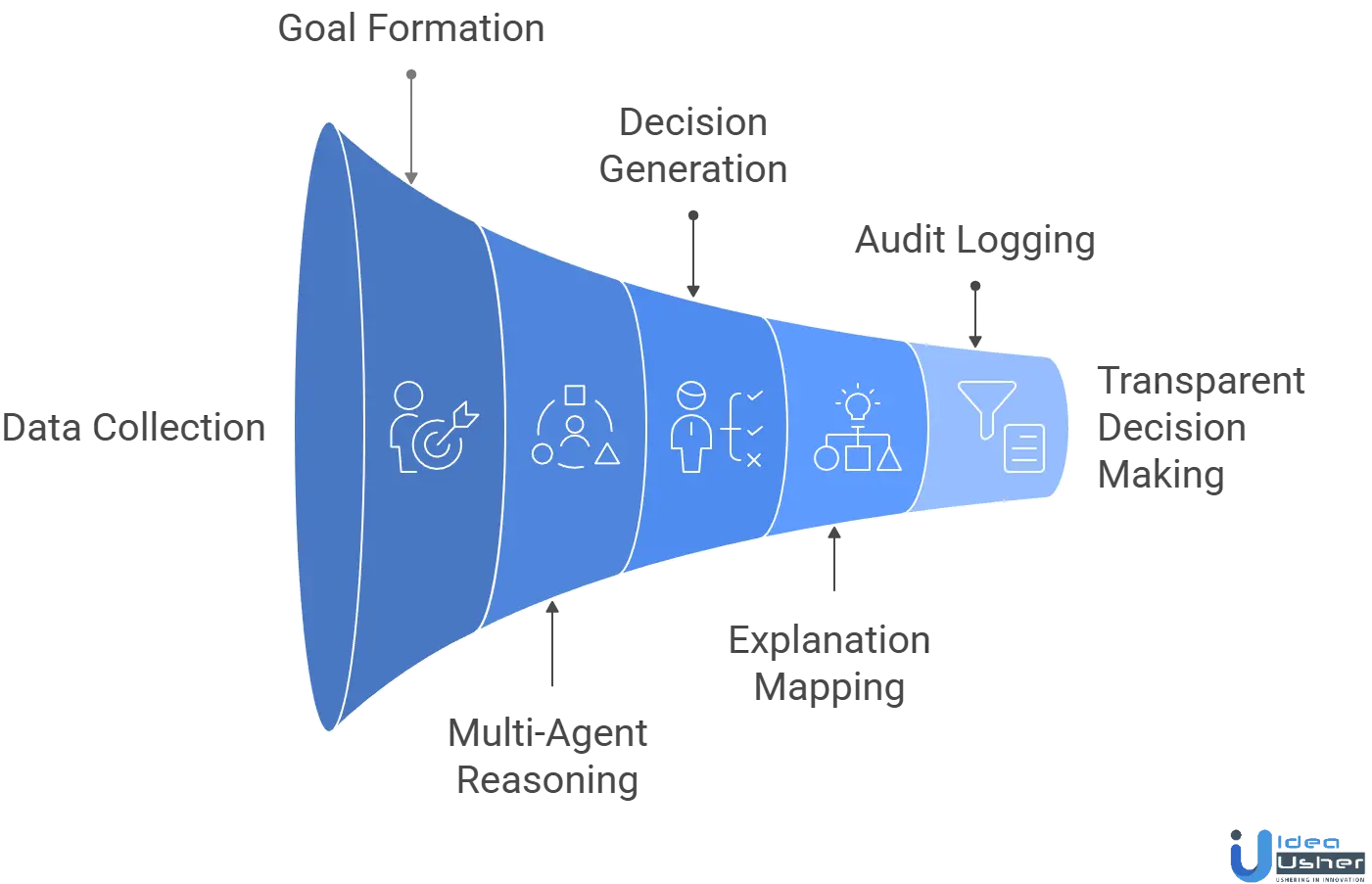
1. Input Collection
The platform processes structured data (credit scores, financials, transactions) and unstructured data (notes, communications), standardizing and tagging each with metadata for source and ownership to keep all information fully traceable and auditable.
Example: The system pulls income data from payroll APIs, validates document authenticity via OCR, and links both to the applicant’s ID record in the bank’s database.
2. Goal Formation
The AI orchestration engine sets a task objective, for example, “Evaluate loan eligibility while minimizing risk and ensuring fairness.” Agents handle sub-goals like fraud detection, risk scoring, and compliance checks, all guided by enterprise-defined rules and thresholds.
Example: The compliance agent ensures the loan evaluation aligns with banking regulations and responsible lending laws, while the risk agent targets a default probability below 4%.
3. Multi-Agent Reasoning
Each agent operates independently yet in sync. The Risk Agent analyzes patterns, the Fraud Agent detects anomalies, and the Compliance Agent ensures regulations are met, while the orchestrator enables context sharing and collective decision refinement.
Example: When the fraud agent flags unusual income inconsistencies, the risk agent recalibrates its prediction model, ensuring the decision incorporates all detected signals before proceeding.
4. Decision Generation
After synthesizing insights, the orchestration layer issues the final decision to approve, reject, or escalate backed by quantified reasoning and compliance data. Each agent’s logic and evidence are tied to the decision record for complete traceability.
Example: The system approves the loan with a 92% confidence score, citing strong repayment history and verified income, while noting minimal risk exposure.
5. Explanation Mapping
The Explainability Layer links each decision to its reasoning chain, generating clear justifications. Enterprises can see which agents contributed, which rules triggered, and why the final decision was made without analyzing raw model outputs.
Example: The explanation view highlights:
- “Loan approved due to consistent repayment pattern (Agent: Risk Analysis)”
- “No compliance violations detected (Agent: Regulatory AI)”
- “Anomaly review cleared (Agent: Fraud Detection)”
6. Audit Logging
All interactions, from data input to final decisions, are stored in tamper-proof audit logs with timestamps, agent IDs, and reasoning traces, accessible through role-based permissions for auditors and regulators.
Example: During audits, the compliance team can access a customer’s full decision history, including reasoning details and agent communications, ensuring complete regulatory transparency.
Architecture of Explainable Agentic AI Systems
Explainable Agentic AI Systems use a layered architecture connecting agents, orchestration, and explainability. Each layer, from data ingestion to decision transparency, ensures every AI outcome is auditable and interpretable.
| Layer | Core Function | Key Responsibilities |
| Data Layer | Foundation for data intake and preparation. | Collects, cleans, and standardizes structured and unstructured data with metadata for source tracking and lineage. |
| Agent Layer | Hosts specialized intelligent agents. | Each agent focuses on tasks like reasoning, NLP, vision, or compliance and shares context to solve problems collaboratively. |
| Orchestration Layer | Central coordination hub for agents. | Manages task distribution, context flow, and inter-agent collaboration to ensure coherent outcomes. |
| Explainability Layer | Captures and structures agent reasoning. | Logs decision paths, reasoning steps, and causal graphs to generate human-readable explanations. |
| Audit & Compliance Layer | Maintains traceability and regulatory integrity. | Stores all actions, data sources, and outcomes securely for audits and compliance checks. |
| Interface Layer | Human interaction and visualization layer. | Provides dashboards, reports, and natural language insights for transparent decision review. |

Why Explainability & Auditability Matter in AI Decisions?
As AI plays larger roles in businesses, explainable and auditable AI is vital. It ensures outcomes are understandable, trustworthy, and verifiable. Explainability clarifies decisions, while auditability makes them traceable and accountable.
1. Building Trust Across Stakeholders
Enterprises rely on AI not only for speed but for decision integrity and accountability. When systems clearly explain their reasoning, enterprises gain confidence, promoting transparency, accelerating AI adoption, and reinforcing lasting brand trust.
2. Ensuring Compliance & Regulatory Readiness
Industries like finance, healthcare, and insurance, which follow strict regulations, require auditable, justified actions. Explainable AI helps ensure automated decisions pass audits and legal reviews, aiding compliance and reducing operational risks.
3. Minimizing Black-Box Risks
Traditional AI systems often act as black boxes, making their decisions hard to interpret. Explainability removes this opacity by revealing how data and context shape outcomes, helping prevent bias, improve accuracy, and support continuous model refinement.
4. Enhancing Ethical and Responsible AI Practices
Responsible AI starts with accountability. Making decisions visible and auditable helps organizations detect bias, prevent misuse, and ensure ethical outcomes. It transforms AI into a governable, value-driven system reflecting integrity.
5. Empowering Human Oversight
Explainability links human and machine reasoning, enabling decision-makers to challenge, refine, or approve AI outputs with an understanding of their basis. This human-in-the-loop approach ensures automation supports, not replaces, strategic judgment.
6. Driving Better Business Outcomes
Explainable and auditable AI enhances performance and trust. Transparency helps teams spot inefficiencies, optimize processes, and improve faster, creating a smarter, agile enterprise rooted in clarity and confidence.
Why Over 65% of Enterprises Will Require Explainability Layers in AI by 2027?
The global explainable AI (XAI) market was estimated at USD 7.79 billion in 2024 and is projected to reach USD 21.06 billion by 2030, growing at a CAGR of 18.0% from 2025 to 2030. This rapid growth reflects increasing enterprise demand for transparent, auditable AI systems across industries such as finance, healthcare, and supply chain.

According to the report of Business Research Insights, over 65% of enterprises are expected to require explainability layers in their AI systems for internal audit and compliance by 2027, highlighting the growing recognition that auditability and transparency are critical for trustworthy AI deployment.
Why Explainable AI Platforms Are Gaining Momentum
Enterprises are increasingly adopting explainable AI platforms for several key reasons:
- Improved Productivity & Cost Savings: Organizations using AI in audit and compliance workflows report 20–40% productivity gains and savings up to $3.7 million annually, demonstrating tangible ROI from explainable AI.
- Reduction in Operational Risk: AI platforms with built-in transparency and auditability reduce false positives by 50–80%, lower operational risk by around 30%, and enable faster, more reliable decision-making.
- Higher Business Value: Firms with robust AI governance and explainable models report 41% higher business value compared to peers without transparent AI, showing that explainability drives measurable enterprise performance.
- Revenue Growth Advantage: Enterprises prioritizing explainability are 27% more likely to achieve elevated revenue performance, proving that transparent AI systems support not just compliance but also business growth.
- Faster Incident Resolution: Platforms with explainable AI frameworks enable 30–45% faster issue resolution and increase stakeholder trust by 58%, making them indispensable for risk-sensitive operations.
The Opportunity for New Platforms
All these statistics indicate a rapidly expanding market for explainable AI platforms designed for audits and compliance. Enterprises are actively seeking solutions that combine autonomous decision-making with traceable, auditable reasoning, creating a high-potential opportunity for companies looking to launch new platforms.
By developing an explainable AI platform with strong audit capabilities, businesses can:
- Meet growing enterprise demand for transparency and compliance.
- Deliver measurable ROI through operational efficiency and reduced risk.
- Gain a competitive edge in a market where trust and auditability are becoming core requirements.
The convergence of regulatory pressure, operational efficiency, and stakeholder trust is driving the rise of explainable AI platforms for enterprise audits, making now the perfect time to enter this market and scale with confidence.
Key Features of Explainable Agentic AI Systems for Auditable Decisions
Explainable Agentic AI Systems make intelligence transparent, traceable, and accountable throughout decision-making. These features help enterprises maintain visibility and governance as they scale AI orchestration.

1. Transparent Decision Pathways
Each agent documents how and why a decision is made. Every inference, input, and outcome is recorded, allowing enterprises to reconstruct reasoning chains in real time, ensuring no step in the process remains hidden or ambiguous.
2. Context-Aware Explainability
Explainability extends beyond surface-level logic. Systems analyze data context, environmental variables, and agent interactions, making it possible to understand the specific circumstances that influenced each decision. This ensures explanations remain accurate, meaningful, and aligned with business contexts.
3. Comprehensive Audit Trails
All actions, communications, and outcomes are automatically logged into a tamper-proof audit layer. These records support regulatory compliance, accountability, and performance analysis, allowing enterprises to verify every autonomous or collaborative decision at any point.
4. Human-in-the-Loop Governance
Even in autonomous systems, human oversight remains central. HITL checkpoints are embedded to review, validate, or override high-impact decisions. This ensures a balance between AI autonomy and human ethical control, aligning automation with enterprise responsibility.
5. Inter-Agent Traceability
In orchestrated environments, agents constantly exchange information. Explainable systems maintain traceable communication logs that document how agents collaborate, negotiate, and share data. This transparency supports end-to-end accountability across multi-agent workflows.
6. Bias Detection & Fairness Monitoring
Explainable agentic systems continuously analyze model behavior for potential bias in data, logic, or outcomes. When discrepancies appear, the system triggers alerts and recommends corrective measures, ensuring ethical integrity and fairness throughout the orchestration lifecycle.
7. Outcome Justification in Plain Language
Each decision can be translated into human-understandable explanations, allowing business leaders, auditors, or regulators to easily grasp how conclusions were reached. This plain-language justification fosters trust and transparency across both technical and non-technical users.
8. Governance & Compliance Alignment
Built-in governance frameworks ensure that every process aligns with enterprise policies and industry regulations such as GDPR, ISO, or financial compliance standards. This keeps AI deployments responsible, lawful, and audit-ready at all times.
9. Role-Based Access
To maintain audit integrity, systems implement role-based permissions for viewing, editing, or approving decision logs and reports. This ensures only authorized personnel can interact with sensitive records, reinforcing data governance and accountability across the organization.

Creating Explainable Agentic AI Systems for Auditable Decisions
At our organization, we build Explainable Agentic AI Systems for enterprises needing transparent, traceable, and auditable decision-making. These systems go beyond automation; they foster trust, accountability, and regulatory compliance, ensuring AI actions are understandable, verifiable, and governable.
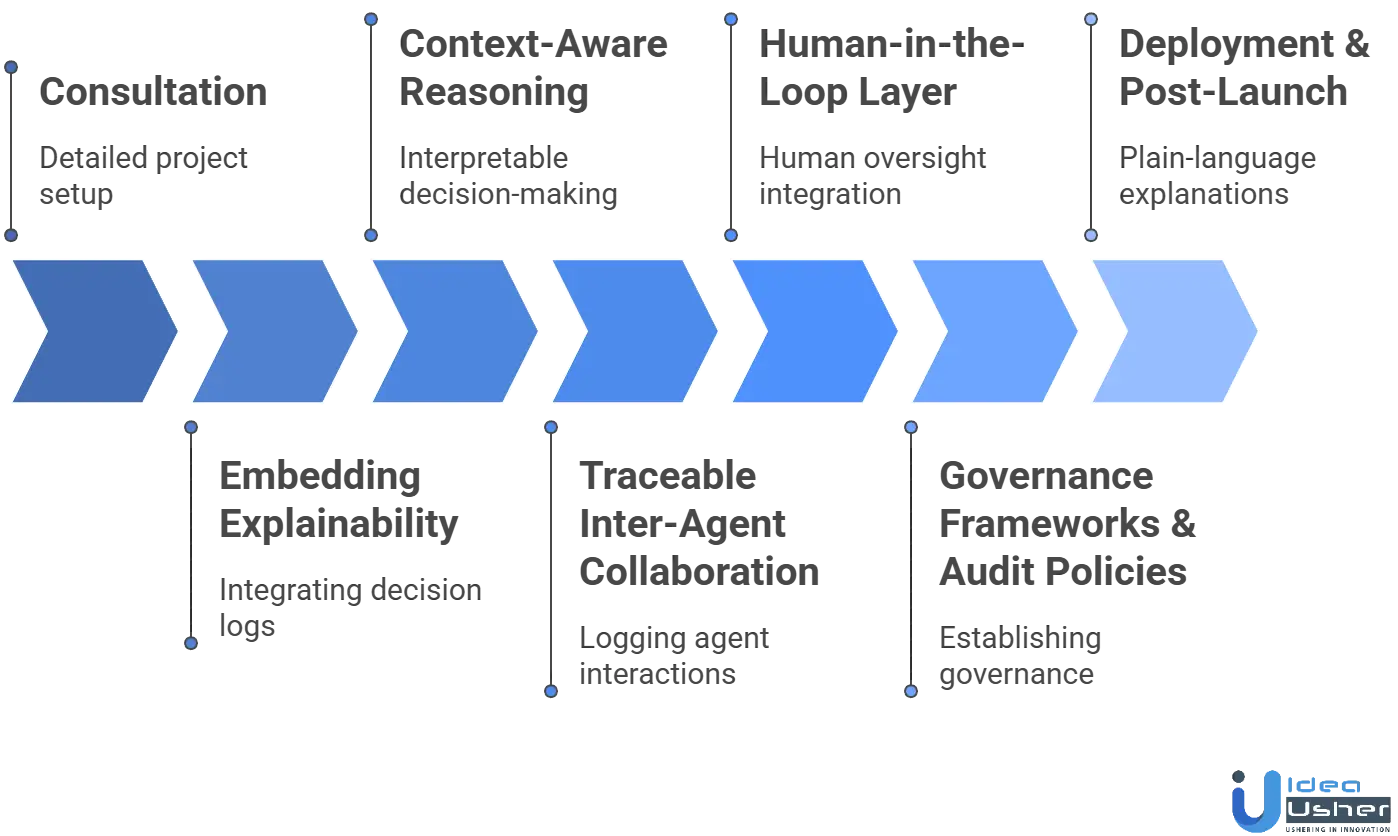
1. Consultation
Every project starts with a detailed consultation to set the goals, compliance needs, and risk limits for the business. We find out where explainability matters most, such as in financial approvals, healthcare diagnostics, or operational compliance, so we can design the right orchestration model from the beginning.
2. Embedding Explainability in the Agent Framework
Our developers build explainability into every agent’s design from the start. Each agent keeps a decision log that records data inputs, reasoning steps, and the context for each action. This way, explainability is not an afterthought but a key part of the system’s logic.
3. Context-Aware Reasoning
We enable agents to make context-aware, interpretable decisions, allowing enterprises to understand not just what an agent decided, but why. Each reasoning path is linked to contextual metadata, making it easy to retrace and validate every outcome.
4. Traceable Inter-Agent Collaboration
In orchestrated environments, multiple agents interact dynamically. We ensure that every communication, data exchange, and dependency between agents is logged and timestamped, building a complete and auditable chain of decision-making across the orchestration network.
5. Human-in-the-Loop Layer
While autonomy is central to agentic systems, human oversight remains essential. We integrate human-in-the-loop mechanisms for sensitive workflows, enabling review, approval, or intervention whenever ethical or regulatory considerations demand it.
6. Governance Frameworks & Audit Policies
We help enterprises establish a strong governance framework that defines accountability, review processes, and data ownership. Clear audit protocols ensure that every automated decision aligns with enterprise and regulatory compliance standards.
7. Deployment & Post-Launch
Finally, our explainable AI systems provide plain-language explanations for every decision made. From internal teams to external auditors, enterprises can easily interpret results, understand the logic behind them, and maintain confidence in AI-led operations.
Cost to Build an Explainable Agentic AI System
Developing an explainable and auditable agentic AI system involves multiple strategic phases, from concept validation to deployment and governance. Each stage contributes uniquely to transparency, accountability, and enterprise-grade reliability.
| Development Phase | Description | Estimated Cost |
| Consultation | Involves strategy sessions, requirement mapping, and defining explainability objectives. | $3,000 – $6,000 |
| Design Phase | Integrates interpretability modules and decision-tracing logic within agents. | $10,000 – $18,000 |
| Context-Aware Reasoning | Builds adaptive reasoning layers for context-driven and intelligent responses. | $19,000 – $30,000 |
| System Integration | Designs transparent collaboration and traceability between multiple agents. | $12,000 – $20,000 |
| Human-in-the-Loop Layer | Adds human feedback and oversight to refine and validate AI outputs. | $8,000 – $14,000 |
| Governance Frameworks | Establishes governance, compliance, and audit-ready reporting protocols. | $10,000 – $20,000 |
| Deployment & Post-Launch | Covers deployment, monitoring, optimization, and ongoing maintenance. | $18,000 – $30,000 |
Total Estimated Cost: $68,000 – $138,000
Note: Actual costs vary based on project scope, data availability, compliance needs, and AI sophistication. Integration and continuous optimization may further influence the final budget.
Consult with IdeaUsher to get a tailored cost estimate and roadmap for building an explainable Agentic AI system aligned with your enterprise goals.
Challenges & Solutions for Explainable AI Development
Creating Explainable Agentic AI Systems that are fully auditable comes with several technical, operational, and organizational challenges. Below, we outline each challenge and how we solve it effectively.
1. Complexity of Multi-Agent Coordination
Challenge: Coordinating multiple autonomous agents in enterprise workflows is challenging because interactions can become complex and difficult to trace, reducing transparency and accountability.
Solution: We implement a central orchestration layer that manages agent interactions, communication, and dependencies. This ensures all agents collaborate efficiently while producing traceable, auditable decision outputs across workflows.
2. Ensuring Transparent Decision-Making
Challenge: Autonomous agents often generate decisions that are opaque and hard to interpret, making explainability and stakeholder trust difficult to maintain in enterprise systems.
Solution: Our Explainability Layer captures reasoning steps, decision trees, and causal links for each agent. We convert technical logic into human-understandable explanations, allowing enterprises to confidently audit and verify every decision.
3. Data Quality & Provenance Issues
Challenge: Poor-quality or inconsistent data can compromise agent reasoning, resulting in inaccurate outcomes and undermining the auditable integrity of decisions.
Solution: We build a robust Data Layer that validates, cleans, and standardizes inputs while attaching metadata and lineage tracking. This guarantees high-quality, traceable data that supports reliable and explainable agentic decisions.
4. Regulatory & Compliance Requirements
Challenge: Automated decision-making in sensitive industries like finance and healthcare must meet strict compliance standards, which can be hard to enforce across multi-agent systems.
Solution: We integrate Audit & Compliance Layers with secure logging, role-based access, and automated reporting. This ensures all decisions meet regulatory and internal policy requirements and remain fully auditable.
5. Integration with Enterprise Systems
Challenge: Integrating explainable agentic AI into existing enterprise IT systems can be technically challenging, slowing adoption and reducing the effectiveness of orchestration.
Solution: We design modular, layered architectures with standardized APIs and intuitive dashboards. This allows seamless integration, visualization, and decision transparency across enterprise workflows without disrupting existing systems.
Real-World Platforms Driving Explainable and Auditable AI Systems
Several innovative platforms are already demonstrating how explainable and auditable AI systems can transform enterprise decision-making. These platforms serve as real-world benchmarks, showcasing how transparency, accountability, and intelligent orchestration can coexist in complex AI environments.
1. Provefy.AI

Provefy.AI, previously known as Kace.AI, is an enterprise AI orchestration and observability platform designed to bring transparency to complex AI systems. It provides detailed reasoning insights, audit-ready decision logs, and real-time performance monitoring. This helps enterprises trace how every AI decision was made and verify compliance across workflows.
2. EthicalXAI
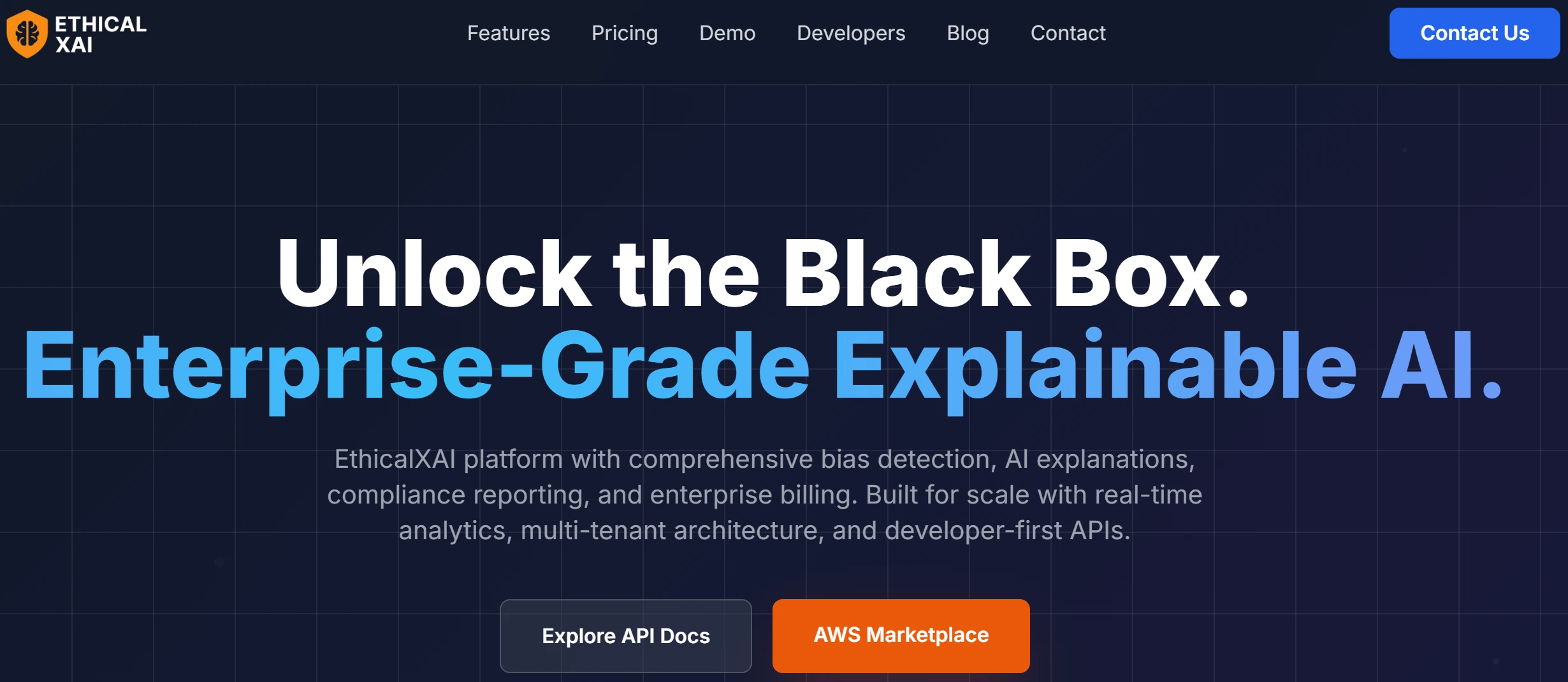
EthicalXAI focuses on ethical governance, transparency, and compliance in enterprise AI. It offers policy-driven frameworks, access control, and auditable decision trails within a zero-trust architecture to prevent misuse and ensure accountability.
3. Oxide AI
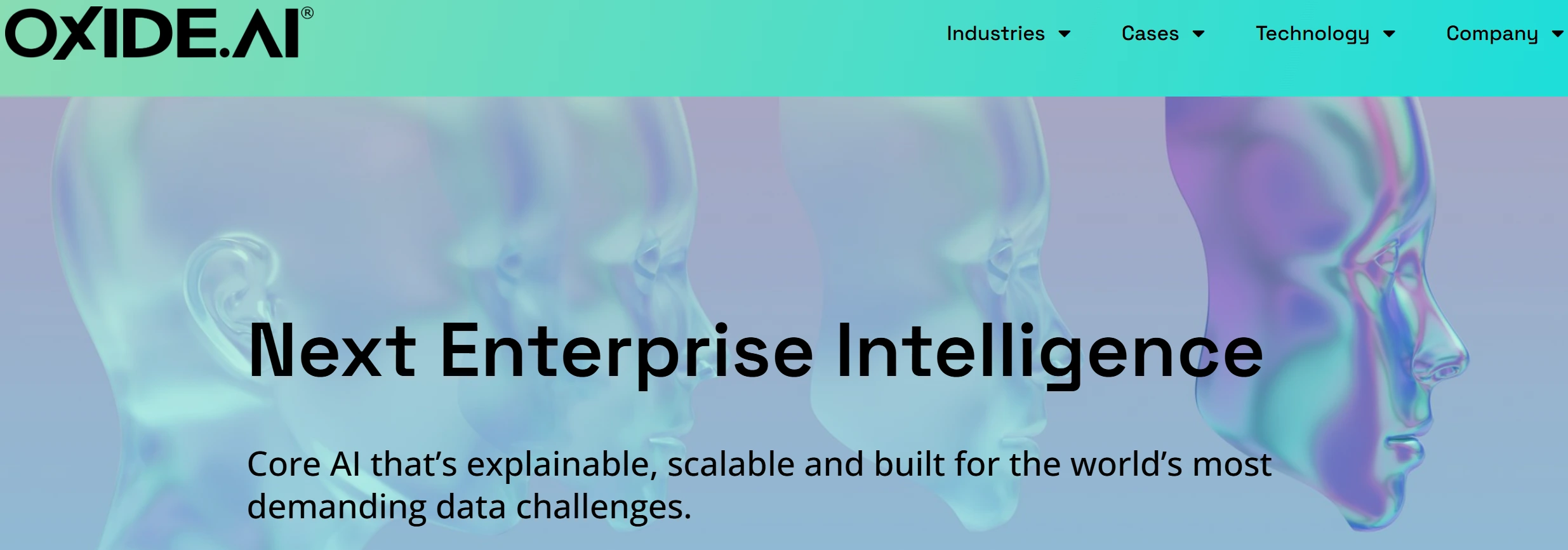
Oxide AI delivers explainable decision intelligence for enterprises through its Quantified AI Decisions™ framework. It breaks down complex model reasoning into measurable, human-understandable components, allowing teams to validate outcomes with confidence and compliance assurance.
4. Tikos Reasoning Platform
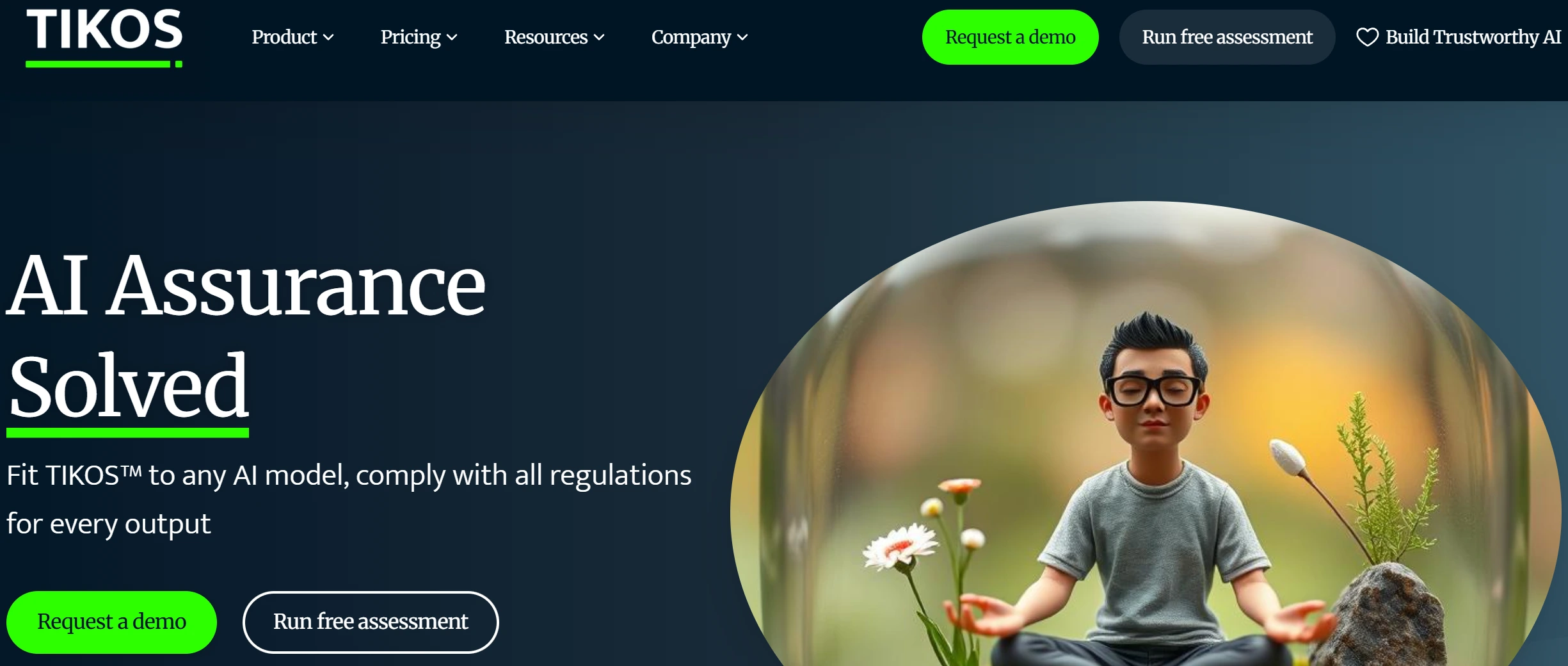
Tikos is a reasoning and explainability platform focused on high-risk industries like finance, defense, and healthcare. It provides tools for automated reasoning, decision monitoring, and contextual explainability, helping enterprises trace how agents reason, interact, and reach conclusions.
5. Nevora

Nevora offers auditable and transparent AI decision systems, primarily for regulated domains like finance and compliance. Each decision is linked to the underlying logic, features, and agent reasoning, ensuring decisions are fully traceable and defensible.
Conclusion
Building transparent and auditable systems is key to earning trust in AI-driven operations. By focusing on Explainable AI, organizations can ensure that every decision made by autonomous agents is clear, traceable, and aligned with compliance requirements. Explainability not only improves accountability but also strengthens user confidence and supports ethical AI adoption across sectors. As enterprises scale their AI initiatives, integrating explainability into system design will be essential for balancing innovation with responsible governance and maintaining transparency in complex decision-making environments.
Why Choose IdeaUsher for Explainable Agentic AI System Development?
At IdeaUsher, we build Explainable AI systems that bring transparency, accountability, and trust to automated decision-making. Our expertise lies in developing agentic AI architectures that offer complete auditability while maintaining high performance and compliance with industry standards.
Why Work with Us?
- Explainability by Design: We integrate interpretability frameworks that make AI decisions clear and traceable.
- Domain-Specific Expertise: From healthcare to finance, our solutions align with regulatory needs and business goals.
- Trusted Development Process: We build AI models that provide transparency without compromising scalability or accuracy.
- Ethical and Compliant AI: Every system we design adheres to governance and audit requirements.
Explore our portfolio to see how we have helped global brands launch impactful AI solutions.
Connect with us to develop your Explainable AI system that ensures responsible innovation and data-driven trust.
Work with Ex-MAANG developers to build next-gen apps schedule your consultation now
FAQs
Explainable AI refers to systems that make their decisions transparent and understandable. It is crucial for building trust, ensuring regulatory compliance, and enabling human oversight in AI-driven decision-making.
Agentic AI systems apply Explainable AI to provide clear reasoning behind actions taken by autonomous agents. This transparency helps organizations audit decisions, identify biases, and maintain accountability in AI operations.
Core components include interpretability models, data visualization tools, and traceability mechanisms. These elements allow users to understand how inputs influence outputs and ensure decisions are justifiable and reproducible.
Explainable AI enables organizations to document and justify every AI-driven decision, meeting transparency requirements set by regulatory bodies. This ensures ethical governance and builds confidence among enterprises and auditors.



